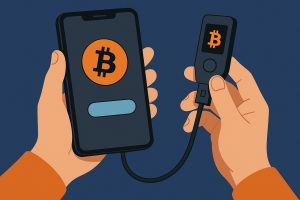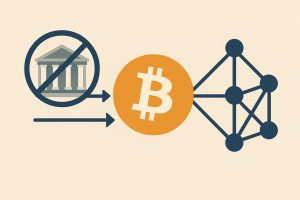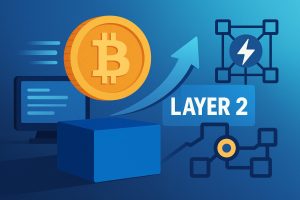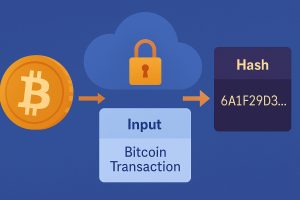Accelerating Transactions with Layer-Two Technology
In Bitcoin’s early years, transaction speed became a major issue—especially during times of high traffic. Due to blockchain’s design, the number of transactions per block is limited. As demand rises, so do fees and waiting times. This is where the concept of the Lightning Network emerged as a solution.
The Lightning Network is an additional layer built on top of the Bitcoin blockchain. It aims to offload small or frequent transactions from the main chain. Since not every payment needs to be recorded immediately on the blockchain, many processes become more efficient and faster.
With the Lightning Network, users can send bitcoin almost instantly and at a low cost. This is particularly valuable for everyday use, such as buying coffee or paying for online services. It’s also easier to use in countries with slow internet or high banking fees.
How the Lightning Network Works
The core idea behind the Lightning Network is the use of payment channels. Two parties can create a channel where they can send and receive bitcoin without constantly interacting with the blockchain. At the start, they deposit funds into the channel using an on-chain transaction.
Once the channel is open, funds can be transferred back and forth quickly and cheaply. Even if hundreds of transactions occur, they don’t need to be immediately recorded on the main chain. When the channel closes, the final balance is recorded on the blockchain.
For example, if you frequently buy from a specific store, you can open a channel with them. As you repeatedly make payments and receive change, there’s no delay—each transaction is fast, like a simple mobile wallet transfer.
Why It’s Important for Mass Adoption
One of the biggest hurdles to mainstream Bitcoin adoption is transaction speed. If payments take several minutes or hours to confirm, it’s impractical for daily use. The Lightning Network serves as a bridge to make Bitcoin viable as a payment method.
In some countries, businesses now accept Lightning payments because of their speed and low cost. There’s no need to wait for blockchain confirmations. The experience is similar to typical mobile payments—fast, convenient, and direct.
It also opens the door to microtransactions. For instance, if you want to pay a small amount to read an article or watch a video online, Lightning makes this possible. You won’t be charged high fees as with regular Bitcoin transactions.
Challenges and How They’re Overcome
Although the Lightning Network is promising, it wasn’t perfect at first. Initially, setting up a payment channel was technical and confusing for average users. You had to set up a node, maintain it, and understand payment routing.
Now, many wallet apps handle this complexity behind the scenes. You no longer need to know every detail of channel management. Mobile wallets like Muun or Breez make the process beginner-friendly.
Another challenge is liquidity. For a channel to work, it must have enough funds on both sides. If the balance runs out, transactions can’t proceed until it’s refilled. However, new tools are making liquidity management much more accessible.
Real-Life Examples of Successful Use
In El Salvador, some businesses already use the Lightning Network to accept payments from customers. They prefer it over credit cards and traditional bank systems due to its speed and lower costs—resulting in faster income and fewer fees.
Online creators also use Lightning to accept small donations from fans. Some websites offer Lightning tip buttons. For example, one programmer received over a hundred transactions in a single day from users around the world—all fast and low-cost.
Freelancers benefit from Lightning for cross-border payments. Instead of going through banks or remittance services, they receive payments directly to their mobile wallets in seconds.
Lightning vs. Regular Bitcoin Transactions
A regular Bitcoin transaction is written directly to the blockchain. It must be confirmed by miners and usually involves a waiting time. While secure, it can be slow and costly—especially during network congestion.
Lightning transactions, on the other hand, happen off-chain. No miners are needed for each payment. This greatly reduces costs and speeds up the process. However, it’s not suitable for all types of transactions—especially large payments that require permanent on-chain records.
The best use of each depends on the context: Lightning for small, frequent transactions; regular Bitcoin for large, high-security ones.
Expanding the Network and Interoperability
As Lightning adoption grows, the network’s overall capacity increases. Today, thousands of nodes are online, and hundreds of thousands of channels are active. Wallet apps are making connectivity between them more seamless than ever.
There are also projects working on interoperability, connecting Lightning with other blockchains. These bridge projects aim to extend Lightning’s instant payments beyond Bitcoin. Although still experimental, they show strong community support.
Interoperability is key to Lightning’s success. If it can be used across multiple platforms, it becomes even more powerful as a universal payment layer.
Security and Privacy of Transactions
Unlike regular Bitcoin transactions, Lightning payments don’t appear directly on the blockchain. This provides a higher level of privacy. Transaction histories are harder to trace, making Lightning ideal for users who value confidentiality.
Security is maintained through smart contracts within payment channels. If one party violates the agreement, a built-in penalty system favors the honest participant—one of the features that fosters user trust.
Wallets also offer additional encryption for offline keys and signing processes. This means even on mobile devices, each transaction remains secure.
Education and Adoption Support
There are organizations that teach users how to use the Lightning Network. Online courses, video tutorials, and community forums are available for beginners. This ensures that not just developers—but everyone—can benefit.
Hackathons are also held for those who want to build apps using Lightning. These events spark creative ideas like instant tipping, machine-to-machine payments, and gaming integrations.
In schools and universities, Lightning is increasingly being introduced as part of blockchain education—making it more accessible to students interested in the future of payments.
Lightning’s Role in the Future of Digital Payments
Over time, the Lightning Network continues to grow as a practical solution for Bitcoin scalability. As tools improve, more businesses and individuals can benefit from its speed and affordability.
It’s not just a technical upgrade—it’s a step toward a more inclusive financial system, from major companies to individuals in remote areas.
If the goal is to make Bitcoin payments fast, affordable, and widely accessible, the Lightning Network remains one of the most promising paths forward.
















No Responses